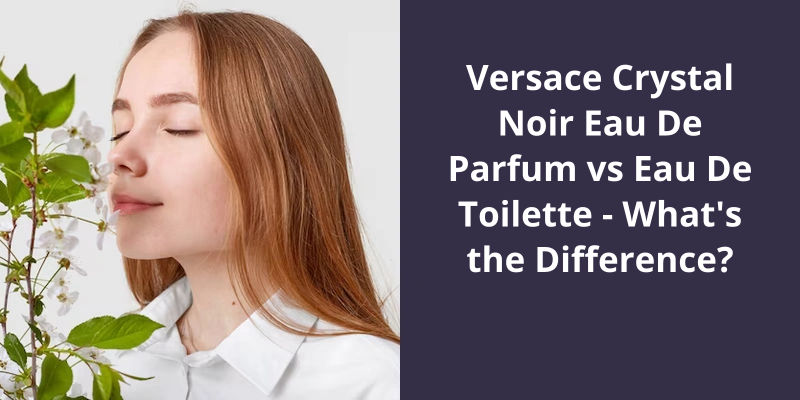To check the serial number or verify the authenticity of your Dior perfume, locate the batch code on the box or the bottle. The batch code usually consists of 3 to 4 numbers or letters. Enter this code in a perfume batch code checker, such as CheckFresh, CheckCosmetic, or Cosmetics Wizard. These websites will provide information about the manufacture date of your Dior perfume, which can help verify if the product is genuine as counterfeit perfumes typically don’t have genuine batch codes. It’s essential to be aware of the packaging and quality of the perfume as well because genuine Dior perfumes tend to have high-quality packaging and a sophisticated scent. If you have doubts, it might be best to purchase directly from the Dior website or an approved retailer.
How Can I Tell if My Dior Perfume Is Real – Verify Authentic Dior Perfume
To ensure the authenticity of your Dior perfume, here are some guidelines to help you determine if it is genuine:
- Purchase from authorized retailers: Buy your Dior perfume from authorized retailers, such as official Dior boutiques, reputable department stores, or trusted online retailers. This reduces the risk of purchasing counterfeit or fake products.
- Examine the packaging: Authentic Dior perfumes come in high-quality packaging with attention to detail. Look for clear and crisp printing on the box, accurate logos, and consistent font styles. The packaging should be sturdy and well-made, without any signs of poor craftsmanship or flimsiness.
- Check the bottle: Inspect the perfume bottle for quality and precision. Genuine Dior perfume bottles are well-crafted, with smooth surfaces, even seams, and precise logos or engravings. Pay attention to the font and labeling, as counterfeit versions may have spelling errors or inconsistent typography.
- Verify the batch code: Each Dior perfume bottle typically has a batch code, which consists of alphanumeric characters indicating the production information. Research online to find websites or databases where you can enter the batch code to verify its authenticity and check if it aligns with Dior’s production standards.
- Smell and compare: Familiarize yourself with the scent of the genuine Dior perfume by testing it at an authorized retailer. Counterfeit or fake perfumes may have a different or diluted scent compared to the original. If the scent significantly differs or appears weak, it could be an indication of a counterfeit product.
- Purchase from reputable sellers: If you are buying a Dior perfume from a reseller or second-hand marketplace, thoroughly research the seller’s reputation and feedback. Ask for clear photos of the product, including packaging and bottle details, before making a purchase.
- Price awareness: Be cautious of heavily discounted prices that seem too good to be true. Counterfeit perfumes are often sold at significantly lower prices compared to the genuine product. Remember that authentic Dior perfumes are premium luxury items, and excessively low prices may indicate a fake.
If you have doubts about the authenticity of your Dior perfume, it’s advisable to consult with a Dior boutique or authorized retailer for further verification. They can help assess the product’s authenticity and provide guidance based on their expertise.
What Do the Numbers on Perfume Mean – Understand Perfume Numbers
The degree symbol on a box or label of a perfume or cologne is an indication of the alcohol percentage of the product. This is useful way to determine age of bottle, as percentage of alcohol in perfumes and colognes has changed over time. The two most common percentages are 80% and 90% for eau de toilette and cologne, respectively. This means that any bottle with these percentages was produced after 1950s.
In addition to the degree symbol, a Zip Code on a label can also be used to determine the age of a bottle. This is because Zip Code system was introduced in United States in 1962, so any bottle with Zip Code on label was produced after this date. Knowing the age of a bottle can also help to determine its value, as older bottles are often more valuable than newer ones.
How Do You Read a Batch Code on Perfume – Read Batch Code Now
Reading a batch code on a perfume bottle can provide information about the production date and batch number of the fragrance. Here’s a general guide on how to interpret batch codes:
Look for the batch code: The batch code is typically printed or engraved on the bottom of the perfume bottle or on the packaging. It consists of alphanumeric characters.
The first character of four character batch code is digit, which indicates year of production. The second character is a letter, which indicates the month of production. The third and fourth characters are two digits, which indicate day of production. For example, a batch code of 1N03 would indicate that the product was produced in the first year of the decade (2010), in November (N) and on the third day of the month (03).
Identify the format: Batch codes can vary in format depending on the brand or manufacturer. They may consist of numbers, letters, or a combination of both.
Decode the batch code: Different brands use different coding systems, so it’s important to research the specific brand’s coding format. Some batch codes may be straightforward, indicating the production date or year, while others may require a more complex interpretation.
Use online databases or resources: Various online resources or databases are available that provide batch code decoding information for different perfume brands. These resources can help you determine the manufacturing date, factory location, or other relevant information based on the batch code provided.
Contact the manufacturer: If you are unable to find information about the batch code through online resources, contacting the perfume manufacturer directly can provide more accurate details. They can assist you in decoding the batch code and providing specific information about the fragrance.
It’s worth noting that not all brands or perfume manufacturers provide easily decipherable batch codes, and some may have internal coding systems that are not publicly disclosed. In such cases, contacting the manufacturer is the best way to obtain accurate information about the batch code.
Remember that the batch code is primarily used for internal tracking and quality control purposes and may not always provide specific information about the fragrance’s age or freshness.
How Do You Read the Expiration Date on Perfume – Check Expiration Date Now
This number is usually found on the bottom of the packaging.
The expiry date is important factor to consider when purchasing any product. The expiry date is usually printed on the body of the packaging or below the packaging.
When looking for expiry date, it’s best to check for Batch Number or Period After Opening (PAO). The Batch Number is usually a number count within the 3 to 12 number count range, and may include letters of the alphabet. The PAO is amount of time product can be used after it’s been opened. This is usually indicated in months or years. It’s important to note that PAO isn’t same as expiry date, and shouldn’t be used as substitute for expiry date.
How Do I Find My Dior Code – Find Your Dior Code
The date code on Lady Dior bags is an important piece of information that can help you determine the authenticity of the bag. The date code is combination of letters and numbers that indicate year and month of production. This tag is usually located on the left side of the pocket and is usually a small rectangle with the date code printed in the center.
It’s important to note that date code isn’t always visible on outside of bag, so it’s important to check inside of bag for date code. Additionally, it’s important to note that the date code isn’t always the same on all Christian Dior bags, so it’s important to check the date code on each bag to ensure that it’s authentic.
How Do I Verify My Dior – Verify Dior Now!
The heat stamp is an important feature of any Christian Dior bag. It’s found on leather tag inside bag and is used to authenticate bag. The heat stamp includes the Christian Dior logo on one side and the date code on the reverse side. The logo stamp includes words “Christian Dior PARIS” with either “Made in Italy” or “Made in Spain” beneath it. This is an important feature to look for when authenticating a Christian Dior bag.
The date code is also important feature of heat stamp. It’s usually a combination of letters and numbers that indicate the year and place of manufacture. For example, date code of “17-MA” indicates that bag was made in 2017 in Madrid, Spain. It’s important to note that the date code may not always be present on the heat stamp, as some older bags may not have one.
How Can You Tell a Vintage Dior – Identify Vintage Dior
Dior purses are renowned for their quality and craftsmanship, and the leather tag inside each bag is no exception. The tag is made from same high-quality leather as rest of bag, and it contains heat stamp that identifies bag as authentic Dior product. The leather tag should have rounded corners, not sharp ones, and the stitching should be neat and even.
Bags produced before 1990 have single line of stitching at top of tag, while more recent bags have stitching all way around tag. This stitching is a sign of quality and ensures that the tag will remain securely attached to the bag. The heat stamp on tag is also important indicator of authenticity, as it’s unique to each bag and can be used to verify its origin. The heat stamp should be clear and legible, and it shouldn’t be faded or worn away.
Conclusion
The importance of checking the Dior perfume serial number can’t be overstated. Not only does it help to ensure that the product is genuine, but it also helps to protect consumers from counterfeit products. By verifying the serial number, consumers can be sure that they’re getting the highest quality product and that their purchase is backed by the Dior brand. Additionally, checking the serial number can help to protect consumers from being scammed or taken advantage of by unscrupulous sellers.





